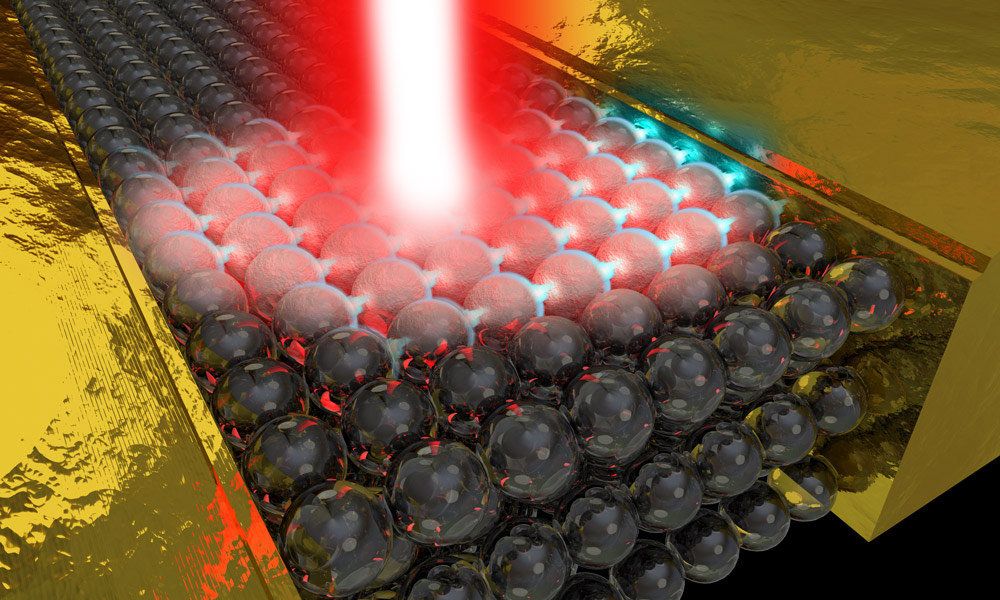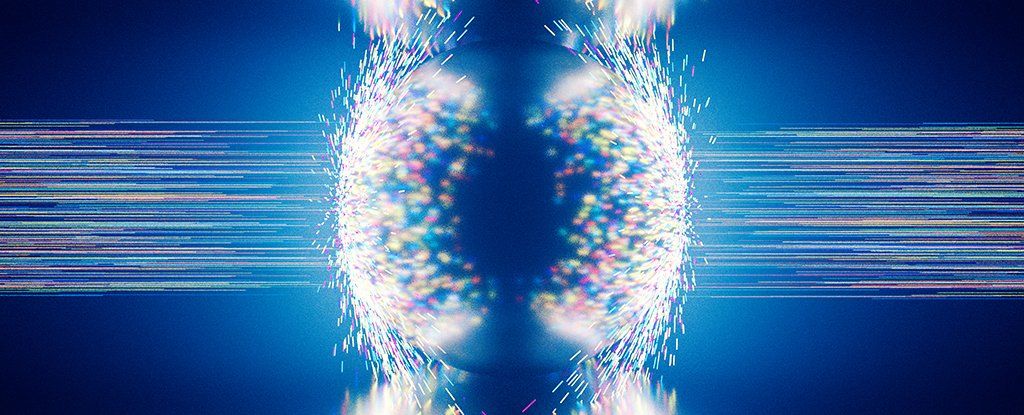( via: Hashem Al-Ghaili )
Get the latest international news and world events from around the world.

Laser bursts generate electricity faster than any other method
Take a glass thread a thousand times thinner than a human hair. Use it as a wire between two metals. Hit it with a laser pulse that lasts a millionth of a billionth of a second.
Remarkable things happen.
The glass-like material is transformed ever so briefly into something akin to a metal. And the laser generates a burst of electrical current across this tiny electrical circuit. It does so far faster than any traditional way of producing electricity and in the absence of an applied voltage. Further, the direction and magnitude of the current can be controlled simply by varying the shape of the laser—by changing its phase.
What If All Cars Went Electric
Could the electric car save our climate?
What If We All Lived on Mars
Would you want to be a Martian?
What If We Could Communicate Directly From Brain to Brain?
Would you share your thoughts if we could communicate directly from brain to brain?
What If We Terraformed the Moon?
Would you move to the Moon?

A Strange Type of Matter Might Lie Inside Neutron Stars, And It Breaks The Periodic Table
A group of physicists are questioning our understanding of how quarks — a type of elementary particle — arrange themselves under extreme conditions. And their quest is revealing that elements beyond the edge of the periodic table might be fair weirder than we thought.
Deep in the depths of the periodic table there are monsters made of a unique arrangement of subatomic particles. As far as elements go, they come no bigger than oganesson – a behemoth that contains 118 protons and has an atomic mass of just under 300.
That’s not to say protons and neutrons can’t be arranged into even bigger clumps and still remain somewhat stable for longer than an eye blink. But for all practical purposes, nobody has discovered it yet.

Here’s What NASA Plans to Do to Keep Us Safe From Asteroids
We don’t actually have a lot to be afraid of when it comes to asteroids. Sure, they might come pretty close from time to time, but they tend to buzz harmlessly by — after all, Earth is a pretty tiny target in the vastness of space.
That doesn’t mean we shouldn’t be prepared, though — and NASA, along with several other US federal agencies, has been putting together a contingency plan.
They’ve called the collective the Interagency Working Group for Detecting and Mitigating the Impact of Earth-bound Near-Earth Objects, or DAMIEN, which isn’t ominous at all, and released a 20-page document that outlines the asteroid — or near-Earth object (NEO) — plans for the next decade.

Is aging not scary? The children’s tales that are killing us
Today we will be taking a look at some of the stories people tell themselves to help them pretend aging is not a problem.
If you ask most people what they think about aging, they will shrug their shoulders and say that it is a natural process. With complete tranquility on their faces, they will agree that, yes, in old age, we are haunted by many diseases, but nothing can be done about it, so it makes no sense to worry about it while you are young and healthy. Just live your life.
Then, the conversation will turn towards an even stranger direction: they will start looking for something good about aging – for example, that it ensures a change of generations, prevents society from becoming stuck in obsolete ideas, and, in general, is the engine of evolution. They’ll explain that the notion of death gives meaning to life and makes us accomplish as much as possible in the little time we have.
Here’s the intriguing part. If you ask the same people what they felt when they first encountered the concept of aging and death from old age, they remember that they were frightened. They were not happy with the answers to “Mom, are you gonna get old and die?” and “Will I die too?” Many people remember that they cried bitterly after this conversation and were filled with sorrow for several days.